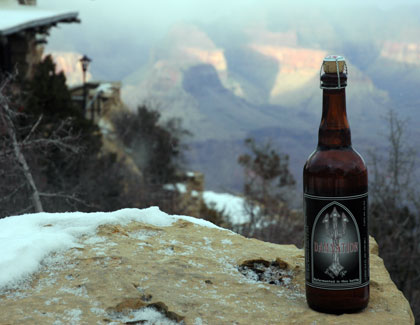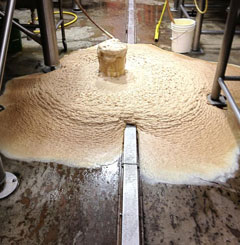 Let’s just call it a “good thing.”
Let’s just call it a “good thing.”
The picture to the right made me smile first thing this morning when I saw Jared Williamson’s tweet from a few hours before.
Williamson is a shift brewer at The Saint Louis Brewery’s production brewery, otherwise known as Bottleworks, where they conjure up Schlafly beers. (He also makes a brief appearance in a book about hops you are sick of hearing about.) Somebody should be collecting the Twitter exchanges between he and Jeremy Danner, although like the message with this photo — “This is Irish Extra Stout w/fermcap. 202BBL in a 210BBL tank” — they might be too “inside baseball.”
The events of this morning got me thinking about the tweet itself. Not the words or the photo, but that it even happened.
First, there was an op-ed piece in today’s Post-Dispatch by Charlie Papazian and Bob Pease of the Brewers Association and Schalfly CEO Dan Kopman, headlined: “Craft or crafty? Consumers deserve to know the truth.” This was followed by a press release from the BA: “Craft vs. Crafty: A Statement from the Brewers Association.” And that included a link to a list of domestic non-craft breweries.
“Craft” has been talked to death in the U.S. beer blogosphere for years and now has infected England as well. I can hardly wait to read the same old debate in German and Polish. And, repeating what I typed here last week, this blog exists because I think the “where” (including where it is brewed, obviously) in beer matters. So I have nothing new to say on the craft/crafty front.
Instead, back to that tweet.
It connects us (whoever “us” is, but I think it is more than one guy who lives three miles from the brewery) to Schlafly beer in a way a commercial that costs more than a million dollars to show during the Super Bowl cannot.
That’s a “good thing.”
That some guy who works in the brewery took the time to snap the photo and type the words is also a “good thing.”
That nobody in “corporate” stopped him, that’s astonishing (other than the fact that Schlafly doesn’t exactly have a “corporate,” but stick with me, please). You think a shift brewer at one of the world’s brewing giants is sending foam-soaked tweets from a fermentation cellar? “Don’t let a focus group get a look at that foam.”
In the course of the morning crafty tweet overload, Danner made a fine point about the dangers of defining anything based on “what it’s not” as opposed to “what it is,” but this is an example of something that makes Schlafly-Boulevard-CivilLife-Perennial-4Hands-UrbanChestnut-and-so-in-St.Louis-and-then-beyond different. And it’s a “good thing.”
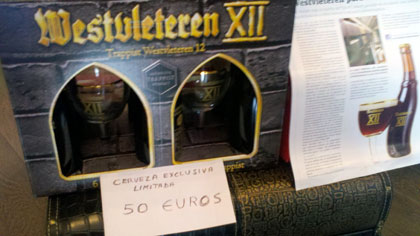
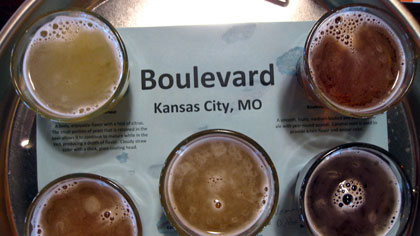
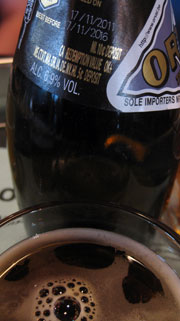 Saturday we drove across the state of Missouri to Kansas City so we could see a(nother) Bruce Springsteen concert.
Saturday we drove across the state of Missouri to Kansas City so we could see a(nother) Bruce Springsteen concert.